Bernhardt Wall, sometimes called the American William Blake, was born in Buffalo, New York on December 30, 1872.
In his early career he worked as a commercial illustrator in New York and Buffalo. An early job was with the Ullman Manufacturing Company of New York, where he created illustrations for picture frames to increase sales. Legend has it that after a postcard company stole Wall’s designs, Ullman switched from frame production to postcards.
Wall had a flair for caricature, and his comic cards, Sunbonnets and Little Breeches from 1905 and 1906, published by Ullman were a great success.
In all he designed more than 5,000 postcards for over fifteen postcard publishers during the pre-World War I postcard craze.
In 1913 Wall became a professional etcher, a printmaking technique that uses chemical action to produce incised lines in a metal printing plate, which then holds the applied ink and forms the image. Apart from some patriotic cards during World War I, he produced few postcards after 1913.
In 1915 Wall travelled to the American southwest. The sketches he made there were used to create copperplate etchings, that were then printed in an edition of 50, and bound into small volumes. It was unusual, but he chose to print the text from the copperplates instead of letterpress, eliminating the need to print each sheet twice. The innovative volumes were a great success and marked a turning point in his career.
In 1918 Wall printed one of his best works. Entitled “Greenwich Village Types, Tenements & Temples,” it consisted of twenty-two original etchings in an edition of 100, printed from zinc plates in various hues. Each plate was signed by the artist in the margin. Later editions followed in 1921 and 1947.
In his introduction for this book Wall wrote affectionately about how Greenwich Village (or “the Village” as it is commonly known) with its hodgepodge streetscapes and bohemian qualities had a fast-changing architectural feel to it:
Greenwich Village is a hodgepodge of tumble-down tenements, rickety architectural relics with a great deal of modernity just minced together. Mushroom tea taverns and dancing dens have found a lodgement in the attics and cellars.
To lovers of history and progress, the ancient landmarks are a delight. To them there is little charm in its artificial bohemian life. It is ostensibly vulgar & vicious but really only a veneer.
Big business is fast ‘butting in’ on the outskirts of the village. Soon the Montmartre of America will be a mere memory.
From these twenty-two etchings, a quirky and charming set of eight postcards of various houses, churches, and the Washington Square Arch were published in 1919 by Ferenz-Martini, an art gallery on MacDougal Street in the Village. There was a definite but not large market for them, as they occasionally turn up for sale at postcard shows and on the internet.

By Bernhard Wall
The arch, designed by Stanford White commemorates the centennial of Washington’s inauguration in 1789.
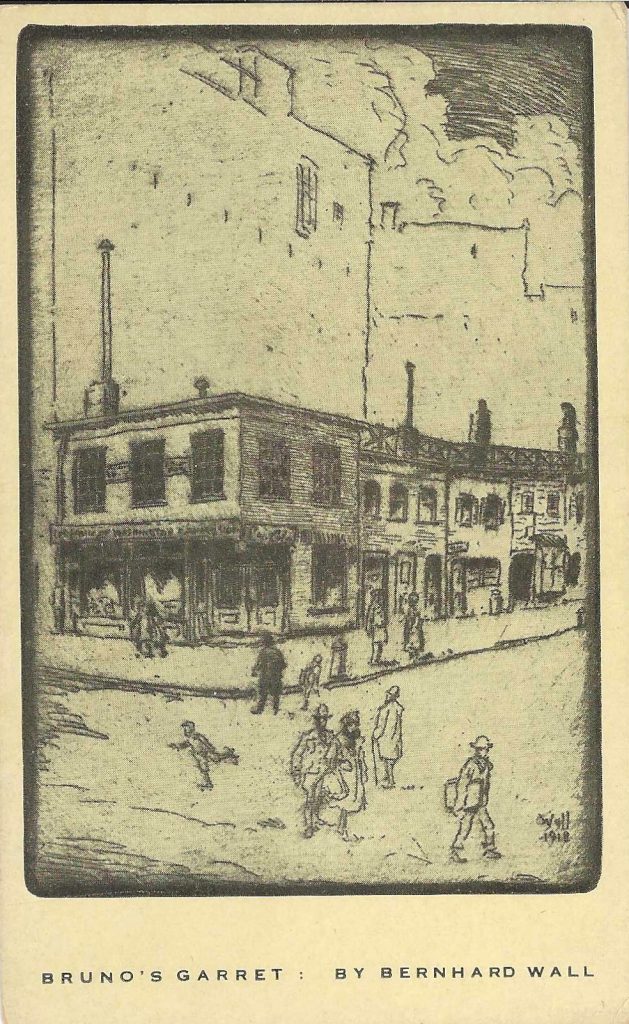
is now Grace Godwin’s Coffee House. Once the home of the keeper of Potter’s Field.
Today a New York University building occupies the site.
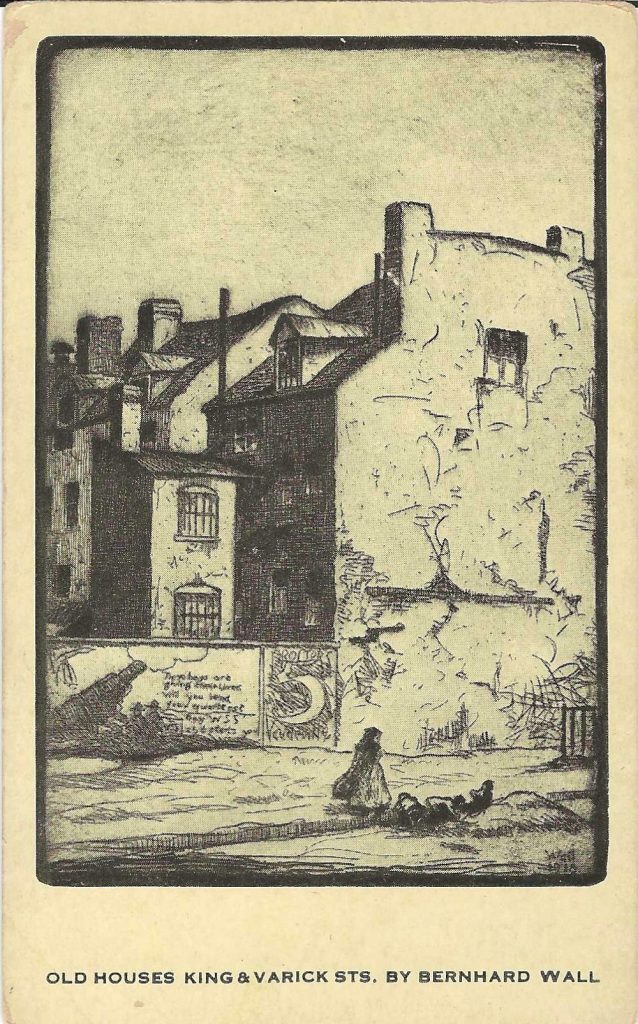
King &Varick Sts.
on the site of Richmond Hill, where Lord Amherst, George Washington, Vice-President Adams, and Aaron Burr lived. These buildings are long gone and replaced by office towers and condominiums.
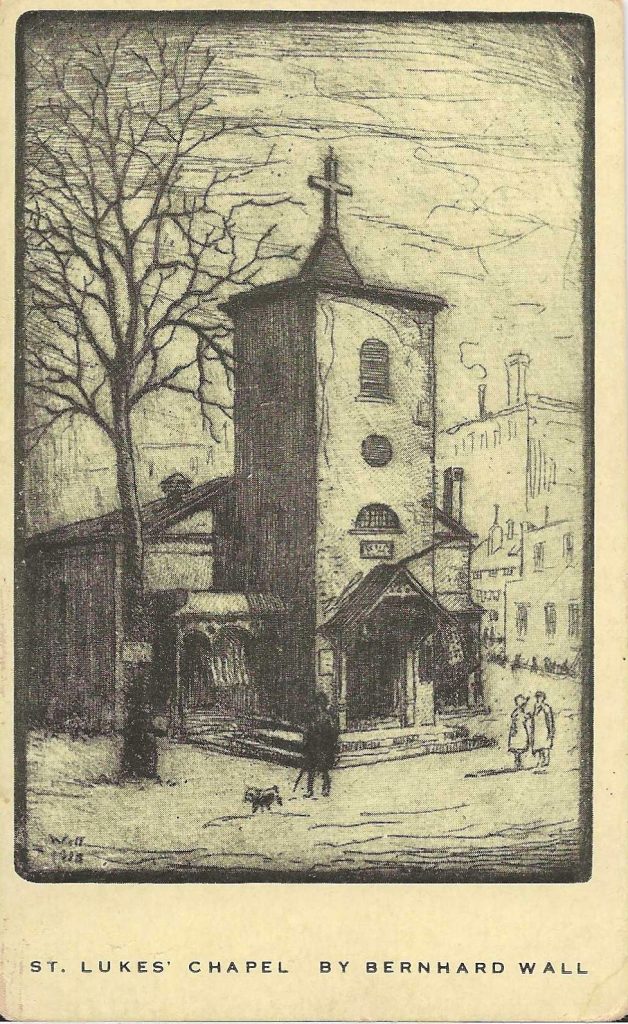
on Hudson Street, later called St. Luke in the Fields, this now 200-year-old Episcopalian church remains in its original location.

in Carmine Street; old relics opposite his old home. The house he lived in has long been replaced by a pretentious apartment house.
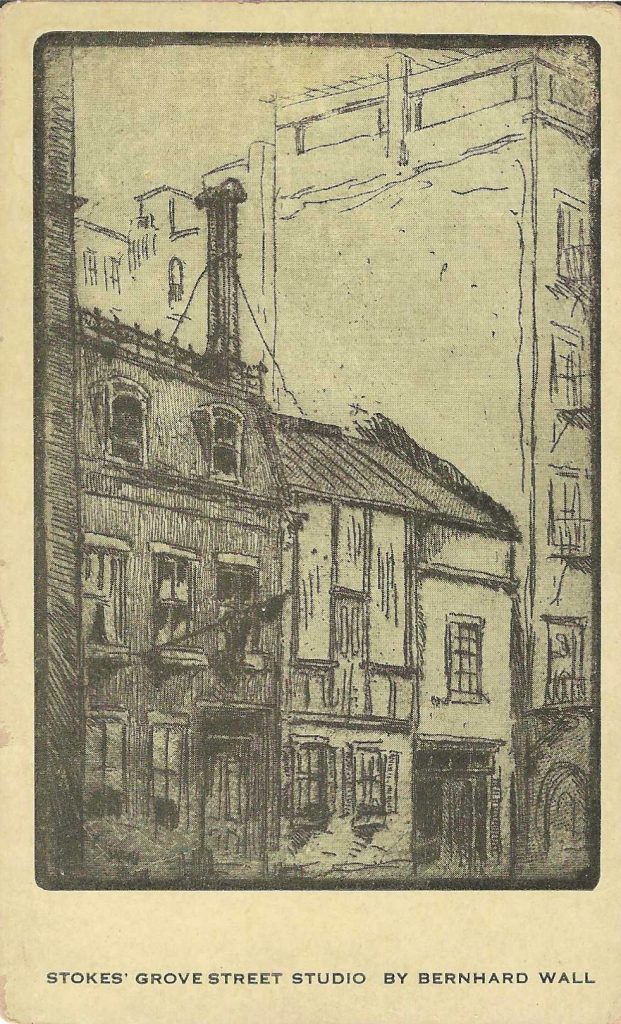
Wall may be referring to Issac Newton Phelps Stokes, a famous architect.

Minetta Street
both quaint and antique in its typical Italian setting. A creek, called Minetta Brook, once ran here.
The Our Lady of Pompeii Church was demolished in the early 1920s due to the southward extension of Sixth Avenue.
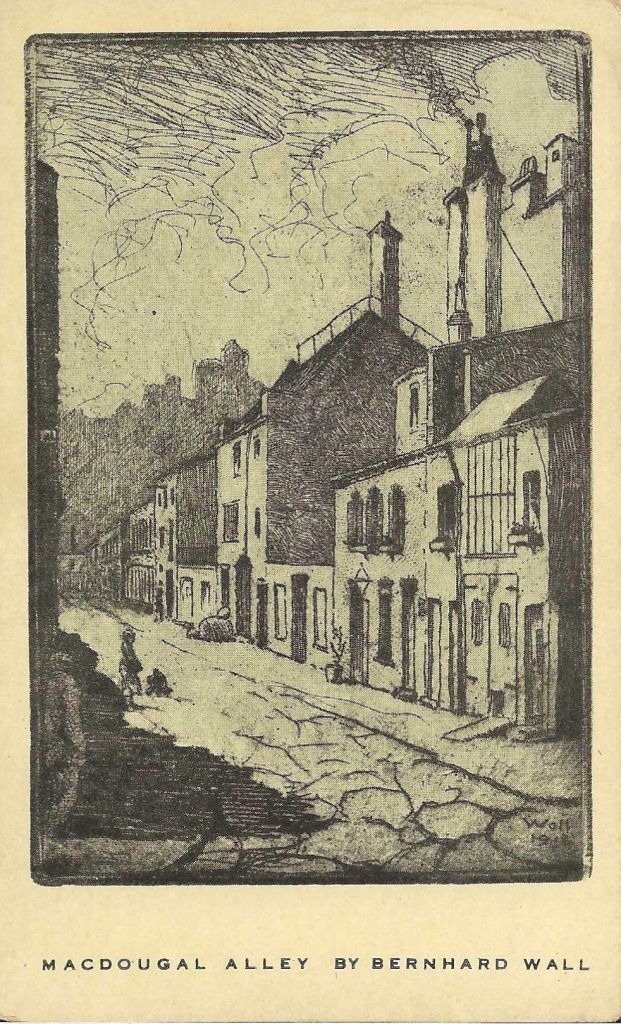
smacks of Montmartre, with its stables converted into comfy studios.
Today the alley has evolved into a mixture of private homes and art schools.

This card was mailed in 1919 to Wilna Hervey, who was an artist and actress, known for her slapstick comedy role as the Powerful Katrinka in The Toonerville Trolley silent film series.
**
Bernhardt Wall had a long and successful career, not just as an author and an artist, he was also as a designer, printer, binder, publisher, and distributor of little books of his etchings. As seen in these Greenwich Village postcards, he had a concern for creating and publishing etchings that told stories about American history and culture. He is particularly noted for his many images of Abraham Lincoln’s life.
Wall passed away in Los Angeles at age 83 on February 9, 1956.
***
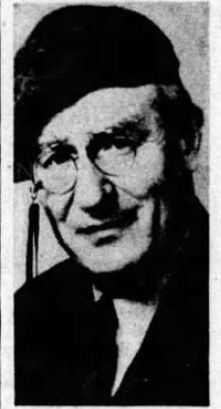
[Editor’s note: Mr. Wall likely dealt with the problem of having the final “t” omitted from his name most of his life. Nevertheless, for what it is worth, the New York State Census, confirmed that Bernhardt (with a “t”) Wall lived in the 22nd ED (enumeration/election district) of Buffalo, New York (Erie County) on February 16, 1892. He was 19-years old at the time. Other members of the family were, Bernhardt, Sr., the head of the household, Friederickie (sic), Bernhardt, Sr’s wife, and their 16-year-old son, Frank. AND, the “t” appeared in the 1930 Federal Census that was taken when Wall and his wife Jane lived in Salisbury, Connecticut. Wall was a veteran of the Spanish American War.]

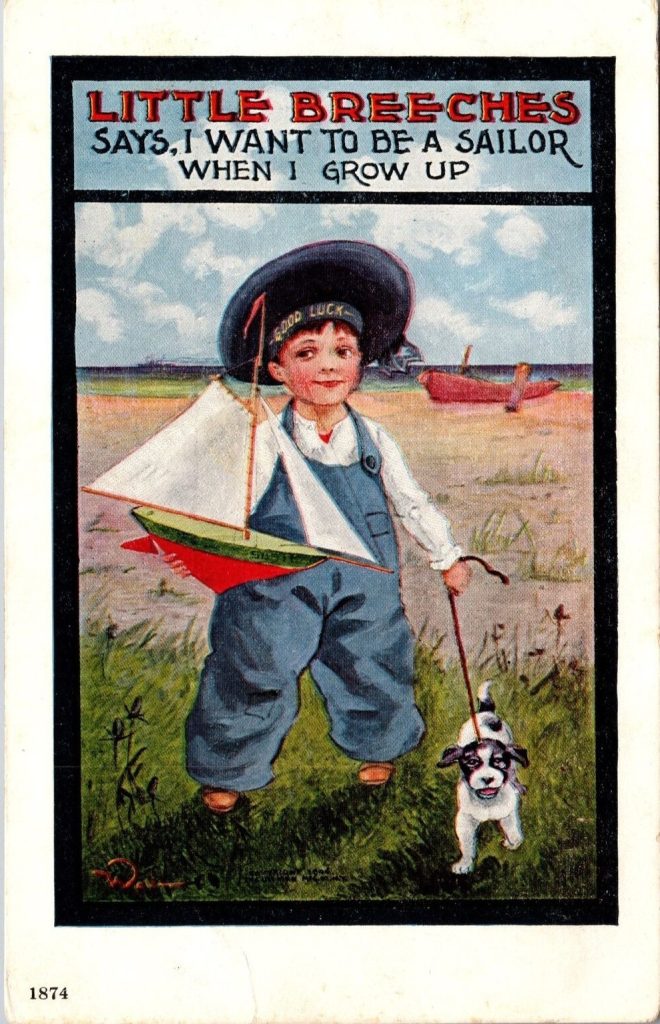
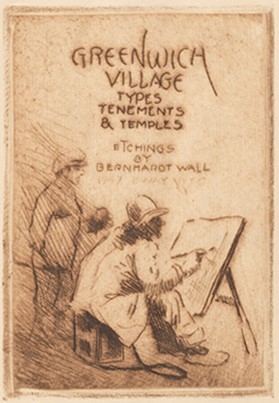

What a prolific postcard artist, from the etchings and fine art to the enormous number of postcards in comic and patriotic themes. Over the years I have seen some of his prints in ptrint dealer’s catalogs and offerings. You would hardly recognize that these are by the same artist. Thanks, Kyle for sharing this group from Greenwich Village.
I’m reminded of the old invitation to “come up and see my etchings” supposedly uttered by “mashers” of yore.
Great article, Kyle! I started collecting Wall’s Sunbonnets back in the 1970s and have a lot of his cards of children in my collection. But I never saw his Greenwich Village works – I enjoyed learning about those.